-
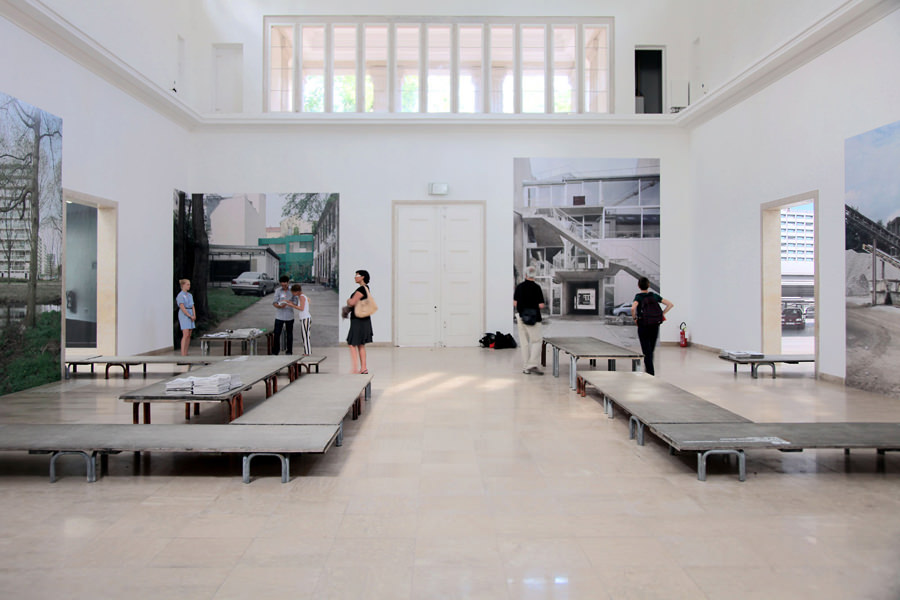
OLD BUILDINGS,
NEW LIFEOn the theme of conversion and renewal across the biennale
Text by Rob Wilson
(Photo: Thomas Spier)
-
The renewal and re-use theme of the German Pavilion was only the most explicit and thorough exploration of a topic that otherwise seemed to appear as a running riff throughout the biennale, not surprising perhaps in a world in ecological and economic crisis (although neither fact seemed to cause much of a ripple across the placid face of Chipperfield’s Biennale).
The concept was picked up in quite different forms and presentations than in Grcic’s clear aestheticized design for the Germans. For example, the Netherlands Pavilion was titled Re-Set, appearing at first to add yet another “R”-word to the extensive but slightly confused lexicon of terms that the Germans used to explain different degrees of building renovation. But for the Dutch, it was the pavilion building itself that was the focus for ideas in the re-purposing of space, or “the ability of architecture to start over,” as the press release put it.
The interior of the Dutch Pavilion was gently animated and manipulated by a giant curtain hanging from a rail that snaked and doubled-back across the ceiling like a giant Scalextric track. This curtain moved fitfully across and around the space, breaking up and dividing it, and was formed of pink and black fabrics, ranging from gossamer-thin netting to velveteen, allowing for varying degrees of light and visibility. The installation’s intention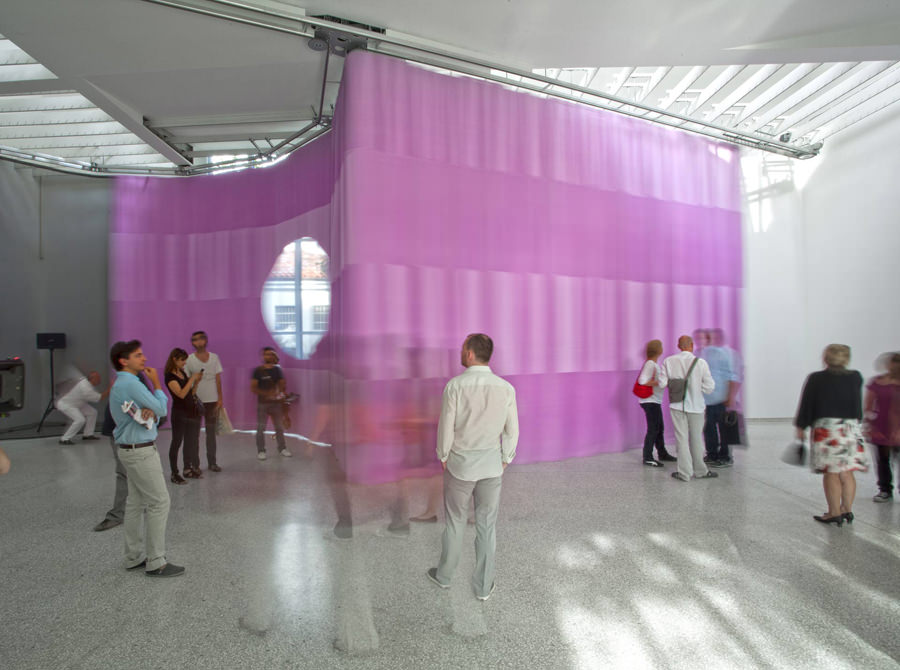
Inside Outside/Petra Blaisse, Re-set, Dutch Pavilion 2012. (Photo: Torsten Seidel)
-
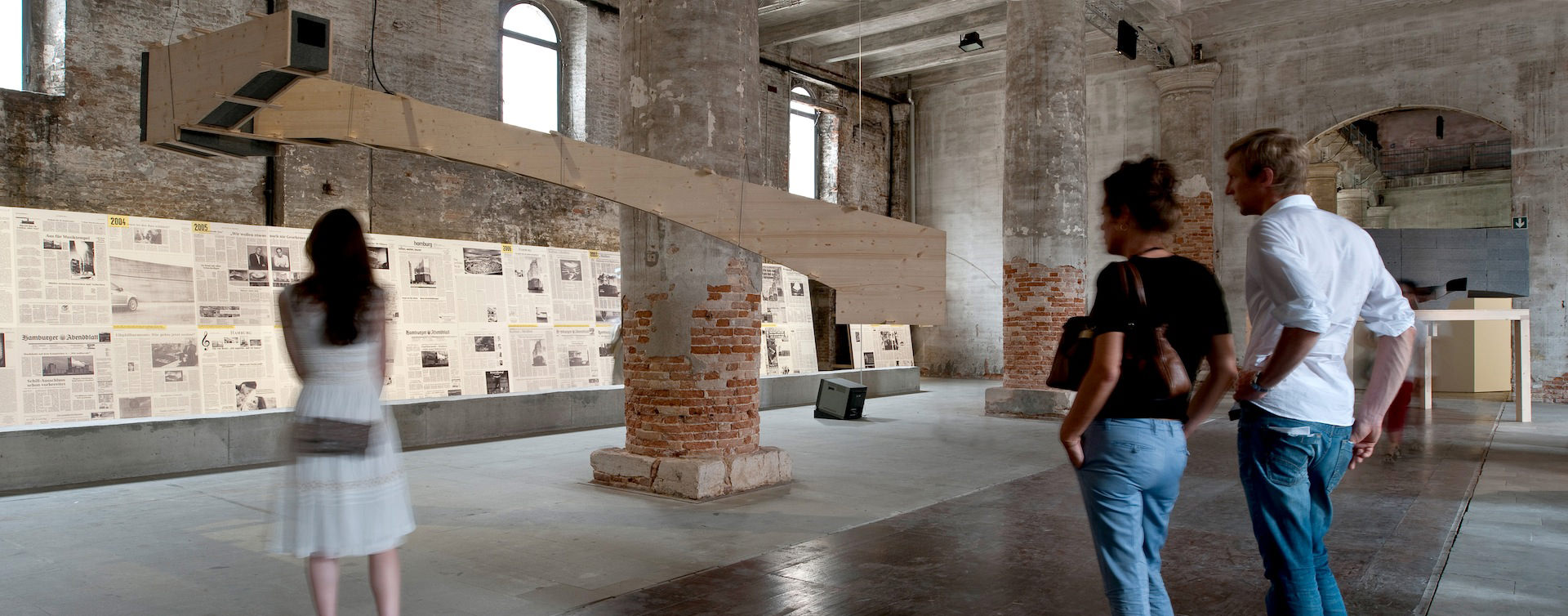
Herzog & de Meuron, Elbphilharmonie – The construction site as a common ground of diverging interests, 2012. (Photo: Francesco Galli / Biennale di Venezia)
to “reveal the hidden potential a vacant building has to offer” seemed to divide opinion, variously judged as poetic and contemplative or facile and dumb.
Elsewhere, there were several archival retellings of well-known cause-célèbres in the re-purposing of chunks of city or key buildings. At the Arsenale, German architect Mark Randel (of David Chipperfield’s office) revisited the history of Tempelhof Airport in Berlin by presenting the wide-ranging plans for re-use or reinvention that followed its closure in 2008. In an adjacent display Herzog & de Meuron presented the media storm of newspaper headlines that has surrounded their Elbphilharmonie project in Hamburg, a concert hall growing out of an old warehouse in the city’s docks, a project that has been on hold since June due to the rolling dispute between city council, architects, and contractors – and their lack of common ground.
The Estonian Pavilion, How Long is the Life of a Building, presents what is described as a “visual poem” on the Linnahall Concert Hall, completed for the Tallinn sailing regatta and one of -
the signature buildings of the 1980 Moscow Olympics, a building which is now almost abandoned except as a training ground for narcotics police and their dogs. The situation is chronicled in an elegiac film of the dripping taps and echoing spaces of the near-empty building, which elegantly tells the story of lack of interest and imagination towards re-use of this building.
Many of these projects are put in perspective by Urban-Think Tank’s powerful documentation and staging of the squatting and transformation by slum dwellers of a high-rise in Caracas. It seems that in Latin America when it comes to re-use, stuff just happens whether you plan for it or not: there’s no sitting around. And this same energy infuses the Mexican Pavilion, which puts its money where its mouth is in terms of renovation. The Mexican Government is cooperating with Venice authorities to restore the derelict Church of San Lorenzo for future use as the Mexican Pavilion. For now, there is a simple but well-made exhibition on a series of significant cultural and arts buildings in Mexico, many of which reuse or convert existing buildings – a library from a tobacco factory, an art gallery from a sawmill.
Whether speculative, projected, or realized, these strategies for re-use come together to form a theme that can only grow at future biennales.

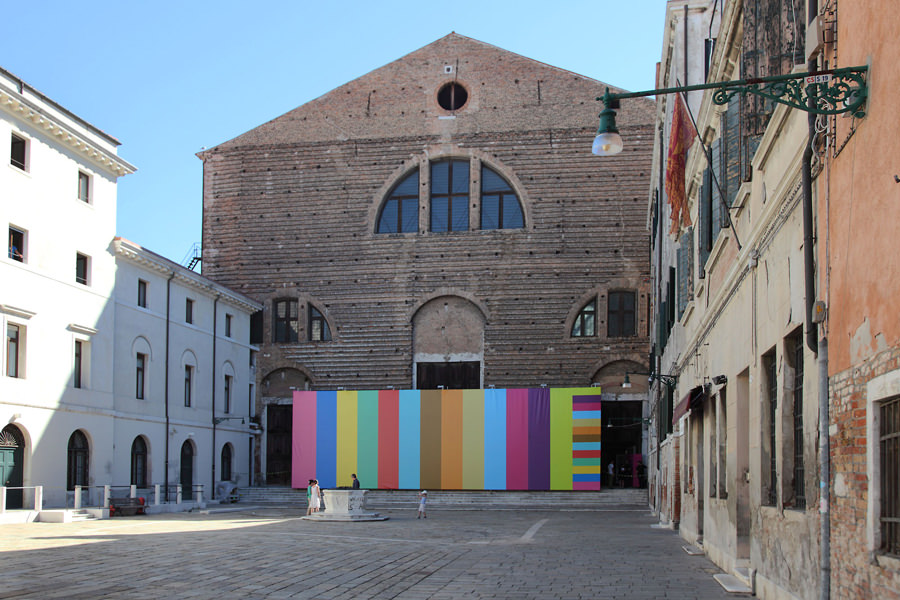
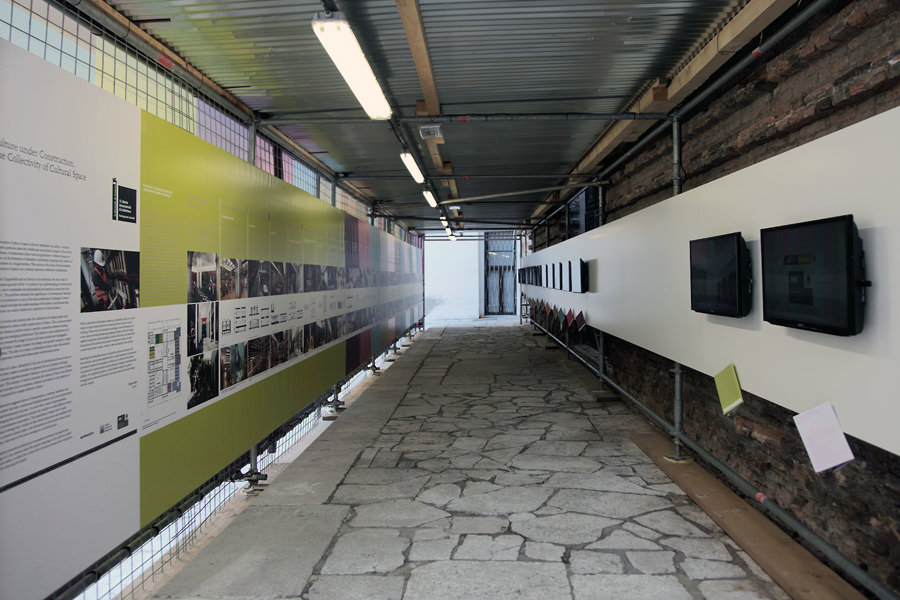
Culture under Construction, 2012, The temporary Mexican Pavilion outside the derelict Church of San Lorenzo. (Photos: Thomas Spier)
-
CULTURE UNDER
CONSTRUCTIONMexico’s church pavilion
Text by Rob Wilson
Off a small campo in the Castello district, the impressive but derelict Church of San Lorenzo is Mexico’s new pavilion, its use over the next nine years was granted in return for funding the church’s restoration. While the restoration has not yet happened, and the spectacular interior can still only be viewed from the doorway, in front of the church a highly-coloured hoarding provides the setting for the temporary Mexican Pavilion, containing the exhibition Culture Under Construction. In a simple and clear display, the exhibition details 13 recent cultural and artistic projects in Mexico, including libraries, arts centres, and botanical gardens, many of the them re-utilizing existing buildings – and making a powerful link with the future rehabilitation of the church. (Photo: Thomas Spier)

-
Search
-
FIND PRODUCTS
PRODUCT GROUP
- Building Materials
- Building Panels
- Building technology
- Façade
- Fittings
- Heating, Cooling, Ventilation
- Interior
- Roof
- Sanitary facilities
MANUFACTURER
- 3A Composites
- Alape
- Armstrong
- Caparol
- Eternit
- FSB
- Gira
- Hagemeister
- JUNG
- Kaldewei
- Lamberts
- Leicht
- Solarlux
- Steininger Designers
- Stiebel Eltron
- Velux
- Warema
- Wilkhahn
-
Follow Us
Tumblr
New and existing Tumblr users can connect with uncube and share our visual diary.
»Intelligence starts with improvisation.«
Yona Friedman
Keyboard Shortcuts
- Supermenu
- Skip Articles
- Turn Pages
- Contents


